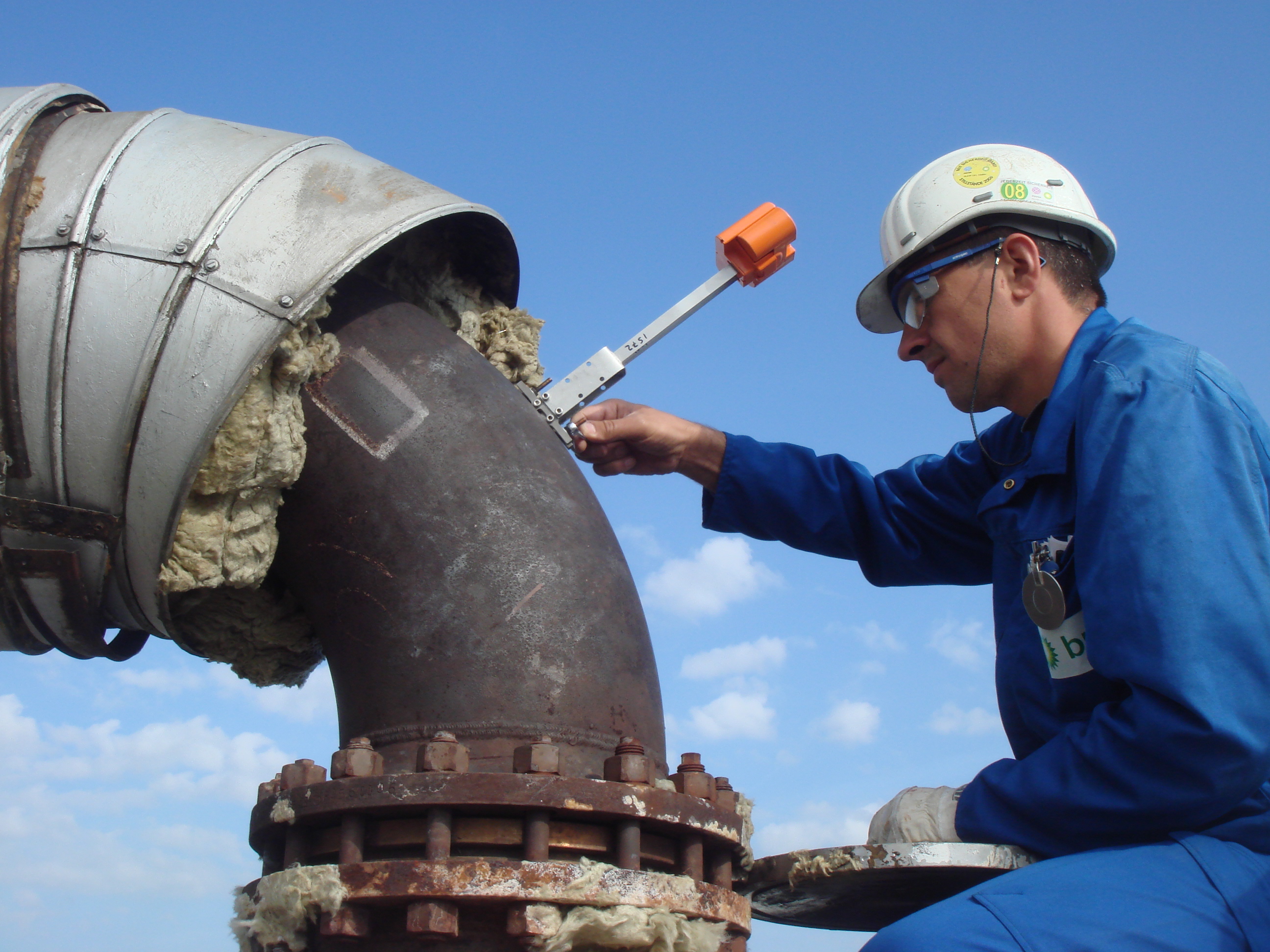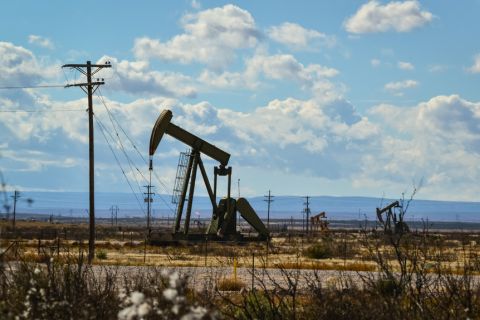Sand and sea in the Caribbean is normally an indication of a relaxing summer holiday and a pleasant time for all concerned. But when it comes to sand and its impact upon topsides production equipment, the experience is not so welcome.
On an operator’s gas production platform situated about 80 km (50 miles) off the east coast of Trinidad and Tobago, sand erosion was a particular challenge and one that the operator was conscious of from the outset.
Since going into production in 2009, the platform has become one of the largest net producers of natural gas in the operator’s global portfolio, with average production of about 17 MMcm/d (600 MMcf/d) of gas in addition to associated condensate from four wells. The facility sits in a water depth of about 90 m (300 ft) and is a significant revenue generator for the Trinidad and Tobago operation.
Sand and sea challenge
As with any asset, maintaining integrity to ensure optimum output and meet regulatory requirements is a priority, which presents its own logistical problems in an unmanned offshore platform.
Traditionally difficult to detect and evaluate, the rate of erosion due to sand is rarely linear over time and intensifies rapidly with an increase in flow rates. Sand can remove metal and cause damage very quickly. Operators must therefore walk a careful line between conservative production rates, which lower revenues, or driving the assets harder and increasing the risk of unplanned outages or even loss of hydrocarbon containment.
Permanently mounted acoustic sand detectors and alarms had been deployed on the stainless steel topside risers of this particular platform. The sensors detected the presence and quantity of produced sand and therefore indirectly indicated the likelihood of erosion taking place. However, they provided little information about the shape, size and hardness of the sand particles, all of which can significantly affect metal erosion rates.
Intrusive pitfalls
Intrusive methods that place a sacrificial probe inside the fluid stream and measure its demise as it corrodes or erodes also are able to indirectly detect periods of high wear.
However, since they are not measuring the pipework, they do not give the operator an understanding of the actual asset condition. Intrusive methods also come with additional hazards—getting the worn probe out from inside the pipe is a skilled and dangerous activity. Safety concerns around online probe replacement are causing many operators to reduce their use or not replace them once they have expired.
The acoustic sand detectors and intrusive probes were not able to measure the actual impact of the produced sand—metal loss—on pipework integrity as it happened. Instead of continuous monitoring of asset piping integrity during production, maintenance operatives had to take periodic manual wall thickness measurements and make incomplete extrapolations on erosion rates using very minimal datasets. The reliance on manual measurements was made more expensive by the hard-to-access site: A dedicated crew of four was helicoptered in every three months to inspect the integrity of the topside risers and pipe work. In addition, the acoustic sand sensors had to be recalibrated onsite every six months.
The operator also ran computational models to understand the impact of given levels of sand production. But the shortage of actual integrity measurements meant that the production rates were being throttled back substantially to avoid sand erosion issues.
Output vs. well integrity
The operator wanted to ensure that production was optimized to maximize revenue and increase payback from the significant capex investment.
The initial discovery well for this platform indicated that there was upward of 56 Bcm (2 Tcf) of natural gas in place. For the client, sand erosion wasn’t solely a question of maintaining its assets, essential though that is. It also wanted to maximize output from this significant discovery. But increasing production without understanding the immediate effect on well integrity would be as reckless and with potentially damaging consequences.
The operator had previously worked closely with Permasense to develop a new method of measuring the level of erosion and corrosion within piping. The method was already installed in all of its refineries downstream, so a program to roll out the technology to upstream assets was underway. The platform was identified as a valuable target where the technology would offer significant advantages.
Permasense’s solution uses proven ultrasonic principles for measuring the thickness of any fixed equipment. But instead of relying on inspection teams to periodically take these measurements and record them manually, permanently mounted sensors deliver the data wirelessly to existing communications infrastructure used by the onshore operations team. The team members can then view and analyze the information without leaving their desks.

Targeted measurements
The sensors were initially installed in areas of elevated erosion risk. These included areas experiencing the highest flow velocities in one of the producing wells that had the highest sand production rate.
A cluster of sensors was installed in an array formation downstream of the first cushioned Tee, and a circumferential ring of sensors was installed downstream of the choke. Once the initial installation on a single well was complete and providing a regular supply of consistent and robust data, a similar system was installed on the additional producing wells.
In addition, the operator was concerned that produced sand from the facility would carry over through the flowline to a neighboring gathering platform, from where the produced gas is then pumped back to shore. A further 80 sensors were installed in a grid formation on the inlet manifold of the carbon steel flowline from this platform to the neighboring manned platform.
The first batch of sensors was mounted onto threaded studs that had to be welded to the pipe. However, to overcome difficulties associated with qualifying a weld procedure for use in a live production environment, Permasense mounted the next group of sensors onto clamps designed to further simplify installation in an upstream production environment. The company has since developed a magnetically mounted sensor that can measure through external corrosion protection coatings to further ease installation.
Once the locations for monitoring on the platform were selected, installation and commissioning of the system was very straightforward, taking just one day. The system began to deliver data immediately and reliably to the desks of the operator’s onshore engineers.
New insight into condition
With the system installed, previously unavailable insights into the condition and capability of the fixed equipment on the platform have become available.
By default, it transmits measurements on wall thickness back to shore every 12 hours. Onshore engineers have on occasion increased the measurement rates during times of elevated potential risk, such as periods of high sand production or changes to production flow rates. Data management software within the system calculates the rate of wall loss and classifies the measurement locations by user-defined rate thresholds.
The data are mainly viewed and analyzed by asset integrity specialists at the operator’s office in Port of Spain on the island of Trinidad but also are available for viewing from any device on the operator’s network. The team can instantly analyze data and compare those against historical trends.
Early warning system
Graphical representations of the data indicate which sections of the infrastructure show signs of degradation. In effect, the system acts as an early warning indicator, which enables the Trinidad and Tobago operating team to monitor the impact of changes to production rates and adjust them as necessary.
With this new insight the team has increased well productivity by 12% and is confident that the impact on erosion rates is well within safety parameters. This increase in production is equivalent to an increase in saleable gas of 849,505 cu. m (30 MMcf/d) of gas, equivalent to a U.S. $90,000/d rise in revenue (at a price of $3/MMcf).
The monitoring solution has revolutionized the operator’s knowledge and management of sand erosion using trusted ultrasound technology. The level of data, insight and analysis that this has given the operator is making a major contribution to optimizing output. The operator achieved payback within days because of the safe increase in production.
The operator is now installing the Permasense system on other manned and unmanned gas production platforms in the region.
Recommended Reading
Range Resources Holds Production Steady in 1Q 2024
2024-04-24 - NGLs are providing a boost for Range Resources as the company waits for natural gas demand to rebound.
EQT Sees Clear Path to $5B in Potential Divestments
2024-04-24 - EQT Corp. executives said that an April deal with Equinor has been a catalyst for talks with potential buyers.
Novo II Reloads, Aims for Delaware Deals After $1.5B Exit Last Year
2024-04-24 - After Novo I sold its Delaware Basin position for $1.5 billion last year, Novo Oil & Gas II is reloading with EnCap backing and aiming for more Delaware deals.
Matador Hoards Dry Powder for Potential M&A, Adds Delaware Acreage
2024-04-24 - Delaware-focused E&P Matador Resources is growing oil production, expanding midstream capacity, keeping debt low and hunting for M&A opportunities.
TotalEnergies, Vanguard Renewables Form RNG JV in US
2024-04-24 - Total Energies and Vanguard Renewable’s equally owned joint venture initially aims to advance 10 RNG projects into construction during the next 12 months.





